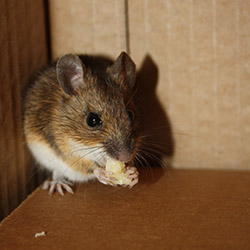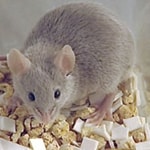
Mouse Control, Trapping & Removal Services
We can rid you of Mouse problems safely and efficiently
Mice are extremely common visitors in cities, rural areas, and even suburban homes. They are adaptable and can survive anywhere where there is enough food and shelter; often in human-inhabited areas. As the most common rodent worldwide, this rodent can survive almost anywhere.
Getting Rid of Mice
It can be tempting to spend time and effort on DIY mouse removal that isn’t effective. Save time and frustration with mouse removal and mouse control that is guaranteed and quick. Additional mouse removal services that Dallas homeowners can purchase will unfortunately only acts as a short-term solution, but we can help. A professional company like Trutech of Dallas will be thorough with sanitizing and trapping to make sure your home is safe.
Mice are known carriers of several dangerous diseases that can be harmful to your family and pets. Call Trutech of Dallas today for professional mouse control and cleanup for peace of mind. Our team will resolve your mouse removal needs in the most complete, humane, and environmentally-considerate manner.
Mice in the Walls
 Mice enter buildings in search of food sources, to escape predators, and to breed. Once mice get inside your Dallas home, they love making nests in secluded areas with sufficient warmth. For this reason, mice often take up residence inside the walls of buildings. The pests gain access to wall cavities via piping, air ducts, and external holes in structures. Since they are small creatures, mice are capable of entering your home or outbuilding through a hole smaller than a quarter inch in diameter. Because mice populations get out of control quickly upon establishing a nest, it’s important that homeowners pay attention for signs of mice in walls.
Mice enter buildings in search of food sources, to escape predators, and to breed. Once mice get inside your Dallas home, they love making nests in secluded areas with sufficient warmth. For this reason, mice often take up residence inside the walls of buildings. The pests gain access to wall cavities via piping, air ducts, and external holes in structures. Since they are small creatures, mice are capable of entering your home or outbuilding through a hole smaller than a quarter inch in diameter. Because mice populations get out of control quickly upon establishing a nest, it’s important that homeowners pay attention for signs of mice in walls.
Signs of Mice in the Walls of a Home
The smells and noises the mice create are important when determining if there are mice inside your walls. Scratching and running noises are frequent during nighttime, as mice are nocturnal. Dallas residents can also identify mice squeaking in their walls.
Mice are known to produce up to 75 droppings per day, and this will accumulate quickly if there are multiple mice. Once this begins to gather, it isn’t long before the smell gets to the rest of the building.
The mice themselves give off a unique musk scent that helps humans identify them. Because their fur is quite greasy, mice will leave marks on the wall when they run along floorboards.
Removing Mice from Walls
It’s important to get rid of mice as soon as you notice an issue, because their damage can become serious very quickly. For one, the pests must constantly gnaw to control the growth of their teeth, and this behavior can lead to structural damage and even fire hazards when they target electrical wires. When mice die inside wall cavities, their bodies start to rot, which is odorous and attracts secondary pests like flies. Finally, mice carry a number of diseases that they spread to humans by urinating and defecating in food products. At the first sign of mice in the walls, homeowners should contact professional wildlife removal services to eliminate infestations.
APPEARANCE
Small in stature, mice are slender with large, sparsely haired ears and long, hairless tails. They tend to be gray or brown in color and have small, protruding eyes. House mice weigh half an ounce and are roughly five to seven inches long, including their three to four inch tails. The pests are agile and use their claws to climb textured surfaces.
DIET
As opportunistic feeders, mice are not picky when it comes to their diets. They enjoy foods high in protein and fat, including cereal grains, nuts, butter, lard, and meat. The pests also like sweets and may pilfer supplies of chocolate. Mice feed 20 or more times in a single evening.
HABITAT
Dark, protected areas make the best habitats for mice. They craft nests out of fibrous materials such as shredded paper, cloth, and insulation that resemble tiny woven balls. In the wild, they like to settle in open fields or under the cover of debris such as woodpiles. Cold weather typically drives the pests inside homes.


